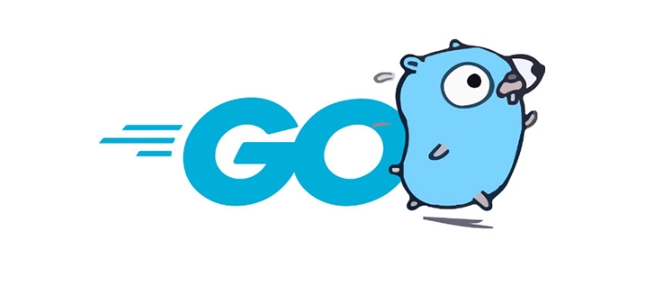Parsing JSON is mainly implemented in the Go language through encoding/json package. Common methods include: 1. When parsing JSON to a structure, you need to define the structure that matches the field and use the json.Unmarshal function; 2. For unknown structures, you can parse to map[string]interface{} or interface{}; 3. When processing arrays, you can use structure slices or []map[string]interface{}; 4. You can ignore fields through tags, delay parsing or process missing fields. Mastering these techniques can effectively deal with most JSON parsing scenarios.

Parsing JSON is a common operation in the Go language, especially when handling API requests or configuration files. encoding/json package in Go standard library already provides very convenient tools to complete this task. As long as you master the basic usage, you can easily deal with most scenarios.

Parsing JSON to structure
When you know the specific structure of JSON data, the most common method is to parse it into a structure. This allows easy access to fields and type checking.
The steps for use are as follows:

- Define a structure whose field name and type must correspond to the key in JSON
- Parse byte slices into structure instances using
json.Unmarshalfunction - Note that the field name must start with capital letters, otherwise it cannot be exported (JSON package cannot be assigned)
Sample code:
type User struct {
Name string `json:"name"`
Age int `json:"age"`
}
data := []byte(`{"name":"Alice","age":30}`)
var user User
err := json.Unmarshal(data, &user) If the JSON field name does not match the structure field, you can use json:"xxx" tag to specify the mapping relationship.

Parse unknown structures JSON
If you don't know the specific structure of JSON, or the structure may change, you can use map[string]interface{} or interface{} to receive data.
For example, parse a JSON object with an uncertain structure:
var dataMap map[string]interface{}
err := json.Unmarshal(data, &dataMap)This approach is flexible but requires manual type assertion, such as getting the string value of a certain field:
if name, ok := dataMap["name"].(string); ok {
fmt.Println("Name:", name)
} For nested structures, you can also recursively use map or []interface{} to process arrays.
Processing JSON arrays
If JSON is an array format, for example:
[
{"name": "Alice", "age": 30},
{"name": "Bob", "age": 25}
]You can define a struct slice to receive it:
var users []User err := json.Unmarshal(data, &users)
Similarly, you can also use []map[string]interface{} to handle array contents with unfixed structures.
Tips: Ignore unwanted fields or tolerate errors
In actual development, sometimes JSON will contain some fields that we do not need, or the field types may be inconsistent. At this time, fault tolerance can be improved by the following methods:
Use
_unwanted fields:type User struct { Name string `json:"name"` _ int `json:"-"` }Delayed parsing nested structures using
json.RawMessageUse
omitemptyto control whether the field is empty and not serializedIf the field may be missing, make sure it is of a pointer or a nullable type (such as
*string)
Basically that's it. Although Go's JSON parsing mechanism is not as flexible as dynamic languages, type safety and compile-time checking can help you avoid many runtime errors. Mastering structure mapping, generic parsing and common label usage will be able to deal with most situations.
The above is the detailed content of How to parse JSON in Go. For more information, please follow other related articles on the PHP Chinese website!

Hot AI Tools

Undress AI Tool
Undress images for free

Undresser.AI Undress
AI-powered app for creating realistic nude photos

AI Clothes Remover
Online AI tool for removing clothes from photos.

Clothoff.io
AI clothes remover

Video Face Swap
Swap faces in any video effortlessly with our completely free AI face swap tool!

Hot Article

Hot Tools

Notepad++7.3.1
Easy-to-use and free code editor

SublimeText3 Chinese version
Chinese version, very easy to use

Zend Studio 13.0.1
Powerful PHP integrated development environment

Dreamweaver CS6
Visual web development tools

SublimeText3 Mac version
God-level code editing software (SublimeText3)
 What is the standard project layout for a Go application?
Aug 02, 2025 pm 02:31 PM
What is the standard project layout for a Go application?
Aug 02, 2025 pm 02:31 PM
The answer is: Go applications do not have a mandatory project layout, but the community generally adopts a standard structure to improve maintainability and scalability. 1.cmd/ stores the program entrance, each subdirectory corresponds to an executable file, such as cmd/myapp/main.go; 2.internal/ stores private code, cannot be imported by external modules, and is used to encapsulate business logic and services; 3.pkg/ stores publicly reusable libraries for importing other projects; 4.api/ optionally stores OpenAPI, Protobuf and other API definition files; 5.config/, scripts/, and web/ store configuration files, scripts and web resources respectively; 6. The root directory contains go.mod and go.sum
 How do you read a file line by line in Go?
Aug 02, 2025 am 05:17 AM
How do you read a file line by line in Go?
Aug 02, 2025 am 05:17 AM
Using bufio.Scanner is the most common and efficient method in Go to read files line by line, and is suitable for handling scenarios such as large files, log parsing or configuration files. 1. Open the file using os.Open and make sure to close the file via deferfile.Close(). 2. Create a scanner instance through bufio.NewScanner. 3. Call scanner.Scan() in the for loop to read line by line until false is returned to indicate that the end of the file is reached or an error occurs. 4. Use scanner.Text() to get the current line content (excluding newline characters). 5. Check scanner.Err() after the loop is over to catch possible read errors. This method has memory effect
 How do you handle routing in a Go web application?
Aug 02, 2025 am 06:49 AM
How do you handle routing in a Go web application?
Aug 02, 2025 am 06:49 AM
Routing in Go applications depends on project complexity. 1. The standard library net/httpServeMux is suitable for simple applications, without external dependencies and is lightweight, but does not support URL parameters and advanced matching; 2. Third-party routers such as Chi provide middleware, path parameters and nested routing, which is suitable for modular design; 3. Gin has excellent performance, built-in JSON processing and rich functions, which is suitable for APIs and microservices. It should be selected based on whether flexibility, performance or functional integration is required. Small projects use standard libraries, medium and large projects recommend Chi or Gin, and finally achieve smooth expansion from simple to complex.
 How do you parse command-line flags in Go?
Aug 02, 2025 pm 04:24 PM
How do you parse command-line flags in Go?
Aug 02, 2025 pm 04:24 PM
Go's flag package can easily parse command line parameters. 1. Use flag.Type() to define type flags such as strings, integers, and booleans; 2. You can parse flags to variables through flag.TypeVar() to avoid pointer operations; 3. After calling flag.Parse(), use flag.Args() to obtain subsequent positional parameters; 4. Implementing the flag.Value interface can support custom types to meet most simple CLI requirements. Complex scenarios can be replaced by spf13/cobra library.
 How do you use conditional statements like if-else in Go?
Aug 02, 2025 pm 03:16 PM
How do you use conditional statements like if-else in Go?
Aug 02, 2025 pm 03:16 PM
The if-else statement in Go does not require brackets but must use curly braces. It supports initializing variables in if to limit scope. The conditions can be judged through the elseif chain, which is often used for error checking. The combination of variable declaration and conditions can improve the simplicity and security of the code.
 How do you declare constants in Go?
Aug 02, 2025 pm 04:21 PM
How do you declare constants in Go?
Aug 02, 2025 pm 04:21 PM
In Go, constants are declared using the const keyword, and the value cannot be changed, and can be of no type or type; 1. A single constant declaration such as constPi=3.14159; 2. Multiple constant declarations in the block are such as const(Pi=3.14159; Language="Go"; IsCool=true); 3. Explicit type constants such as constSecondsInMinuteint=60; 4. Use iota to generate enumeration values, such as const(Sunday=iota;Monday;Tuesday) will assign values 0, 1, and 2 in sequence, and iota can be used for expressions such as bit operations; constants must determine the value at compile time,
 How to format JSON in Sublime Text
Jul 31, 2025 am 09:08 AM
How to format JSON in Sublime Text
Jul 31, 2025 am 09:08 AM
ToformatJSONinSublimeText,firstensurethefile'ssyntaxissettoJSONviaView→Syntax→JSON.2.Usethebuilt-inreindentcommandwithCtrl Alt B(Windows/Linux)orCmd Ctrl B(Mac)toformattheJSON.3.Forenhancedfeatureslikevalidationandsorting,installthePrettyJSONpluginvi
 What is JSON in JavaScript?
Aug 02, 2025 am 11:45 AM
What is JSON in JavaScript?
Aug 02, 2025 am 11:45 AM
JSON is a lightweight text data format used to store and exchange data. Although it comes from JavaScript, it is language-independent and is widely used in data transmission between servers and browsers in web development. Its data is represented in key-value pairs, and the keys must be enclosed in double quotes. The value can only be strings, numbers, booleans, arrays, objects or nulls, and does not support functions and undefined; JavaScript provides JSON.stringify() to convert objects into JSON strings, and JSON.parse() to convert JSON strings into objects. It is often used to obtain data from the API, store configuration information or send form data. It is a communication between web applications and servers.






